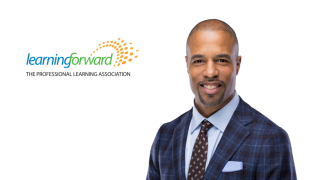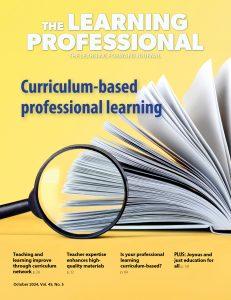As we were wrapping up the April 2017 issue of The Learning Professional, the Trump administration had just issued its budget proposal. As anticipated, it includes many cuts, including in education. Of particular interest for learning leaders is the full elimination of Title II funding. Title II covers, among other things, professional learning, coaches, and instructional support.
Those funds typically support districts in hiring staff who support teachers to be their most effective — helping them to implement evidence-based instructional strategies in literacy or math practices, for example. The funds also support participation in externally sponsored learning opportunities, new teacher mentors, teacher leadership programs, principal leadership development, and so much more related to building educator capacity throughout an organization or district.
I recently heard a radio update on the education cuts in the proposed budget. Addressing the cuts to the grants program that funds after-school programs (supported under Title IV), the reporter noted that the Trump administration said there isn’t “enough evidence that those programs raise student achievement” (Garrison, 2017). That reasoning isn’t unusual when rationalizing budget cuts, even when there is evidence available.
Stakeholders and policymakers want a return on their investment in all areas of federal spending. Lacking it, programs become susceptible to deeper scrutiny and potential elimination.
As the federal budgeting process plays out in the coming months, Congress will have opportunities to reinstate any number of programs and funding lines. Educators have the responsibility to articulate the ways in which these funds have made a positive difference for students.
Unfortunately, there are many examples of professional development that has wasted educators’ time and precious dollars. As a result, we can’t argue that all dollars dedicated to professional learning were spent on efforts that had a positive impact. We can, however, change the negative narrative and deepen stakeholders’ understanding through the use of powerful exemplars and a commitment to continuous improvement in this area.
The persistence of negative perceptions about professional learning makes it all the more imperative that educators include evaluation as a vital component of their planning. In “How do I justify the professional learning plan for my school under ESSA?,” Stephanie Hirsh shares details about addressing evidence. Educators must ask — and be prepared to answer — these questions: How will you know if your professional learning is leading to meaningful results, and how will you make adjustments so you do achieve results?
We know that professional learning, when implemented with fidelity and sustained with resources, advances student learning. We share the positive examples in The Learning Professional and throughout Learning Forward’s initiatives. The district teams in the Redesign PD Community of Practice are among those educators we are proud to amplify as exemplars, both in terms of results for students and their commitment to continually assessing their impact.
Learning Forward is proud to represent learning leaders in their need for substantive support for effective professional learning. We ask that you join us in bringing your best evidence forward and continuing your efforts to demand the most from the learning you plan, facilitate, and experience.
Reference
Garrison, M. (2017, March 17). What federal budget cuts could mean for America’s school system. Marketplace Radio. Available at www.marketplace.org/2017/03/17/economy/mid-day-update/031717-mdu.
This post originally appeared in Learning Forward’s PD Watch and is adapted from the April 2017 issue of The Learning Professional, Learning Forward’s bimonthly member publication.






